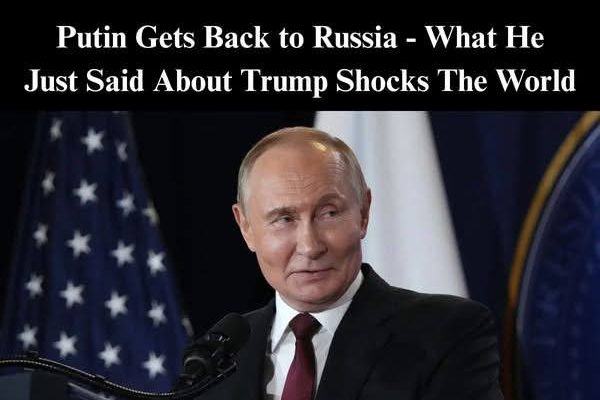In a move that underscores the fragile but ongoing attempt to bridge divides, Russian President Vladimir Putin extended a formal invitation to U.S. President Donald Trump to continue peace talks in Moscow. The gesture followed their high-profile summit in Alaska, a meeting that drew international attention as both leaders tried—albeit cautiously—to set a new tone amid strained relations.
At the joint press conference, Trump described the discussions as “extremely productive,” stressing that, while no binding agreements were reached, the very act of engaging in direct dialogue signaled progress. Putin echoed the sentiment, calling the talks “results-oriented” and suggesting that both sides had managed to identify areas of shared interest that could serve as a foundation for further negotiations.
The symbolic moment came at the close of the summit, when Putin remarked, “Next time in Moscow.” His invitation, delivered with measured diplomacy, was met with a half-smile from Trump, who acknowledged the possibility but also hinted at the political risks of such a trip. Trump joked about the inevitable backlash but carefully left the door open, signaling he was not dismissing the idea outright.
European Response
The reaction from Europe was immediate. Hungarian Prime Minister Viktor Orbán welcomed the summit, declaring that even small steps toward dialogue made the world “a safer place.” Orbán’s remarks reflected broader European hopes that renewed contact between Washington and Moscow might ease tensions and slow the grinding war in Ukraine. European capitals, however, remain divided. While some leaders view the talks as a necessary channel for de-escalation, others worry that overly friendly engagement with the Kremlin could weaken Western unity.
Ukraine’s Position
The Alaska summit was not solely a bilateral affair. In its aftermath, Trump and Ukrainian President Volodymyr Zelensky joined European and NATO leaders in a transatlantic call designed to ensure alignment. The inclusion of Ukraine signaled recognition that any durable peace process must directly address Kyiv’s role and concerns.
Zelensky later gave his public endorsement to the idea of a trilateral meeting involving the U.S., Russia, and Ukraine. He described such a framework as an “important pathway toward peace” while firmly asserting that Ukraine’s sovereignty and security must remain central to any talks. His measured approval suggested cautious optimism, balancing openness to dialogue with the insistence that Kyiv’s interests would not be sidelined.
Next Steps
Momentum now shifts to Washington, where Zelensky is expected to meet Trump in the coming weeks. Their talks will likely focus on the structure and goals of upcoming negotiations, particularly whether a trilateral framework can gain traction and how broader European and NATO allies might be included.
While the Alaska meeting produced no concrete deals, it did generate an atmosphere of tentative optimism. For Washington and Moscow, the opportunity lies in sustaining dialogue without undermining alliances or compromising fundamental positions. For Europe, the hope is that diplomacy can create a window, however narrow, for de-escalation.
As the possibility of future talks in Moscow lingers, the world is watching to see whether this renewed contact signals a genuine thaw—or simply another fleeting moment in the long cycle of tension and cautious rapprochement between the U.S. and Russia.



